Jeans and Denim: A Comprehensive Guide
Jeans are synonymous with casual style in Western fashion. Whether a well-worn pair or a designer denim set, jeans are a closet essential for many. However, beyond simply being pants, jeans represent decades of heritage and evolution within the apparel industry.
As one of the most commercially successful clothing categories, denim jeans contribute over $60 billion annually to the global fashion economy according to recent market research. Their popularity endures despite constant newness in trends. This speaks to the timeless versatility and comfort of denim as a fabric.
In this comprehensive guide, we will explore what makes jeans such an iconic garment culturally and commercially. We will look at the history of jeans’ origins, the development of famous classifications like cuts and washes, various denim materials, and the immense industry built around them. By delving into jeans and denim more deeply, we hope to provide insight into how they have risen to fashion staple status over generations.
Defining Jeans and Denim: What's the Difference?
When people talk about jeans, they’re usually referring to those classic pants we all know and love. But did you ever stop to think about what exactly denim is? Denim and jeans are closely related but not exactly the same.
Denim itself is actually a specific type of thick, durable cotton fabric. It was first woven in Nimes, France, which is where the name “denim” comes from – it’s short for “de Nimes,” meaning it’s a fabric from the city of Nimes. Over time, denim production spread and it became popular for durable work clothes across Europe and North America.
While denim fabric can be used for jackets, skirts, shirts, and more, “jeans” refers specifically to pants made from denim. Jeans really took off in popularity in the mid-1800s when Levi Strauss & Co. started manufacturing tough work pants for gold miners and other laborers using heavyweight denim fabric. The iconic blue jeans were born!

Composition of denim/jeans
When you take a closer look at a pair of jeans, you’ll see they’re actually quite an engineering feat. Denim is special because it has to withstand a lot – bending, stretching, and fading over time. So what exactly makes it so tough, yet still comfy enough to wear every day?
At its core, denim is made from cotton. Cotton provides durability since it’s a strong natural fiber. It also breathes well, so jeans don’t leave you all sweaty. But cotton alone wouldn’t give jeans the lifespan they need. That’s where some synthetic fibers come in.
A lot of denim today has a small amount of polyester added. Polyester adds strength so jeans can handle lots of wear and tear without snapping. Elastane, or spandex, is another common fiber in denim. It gives denim that perfect amount of stretch so jeans flex and bend with your body instead of binding.
The woven twill pattern is also key – it creates a diagonal ribbing effect that makes denim super robust. This, combined with synthetic reinforcements, lets a good pair of jeans last for years of wash cycles and leg day squats! So while jeans seem simple, their composition really allows them to stand the test of time.
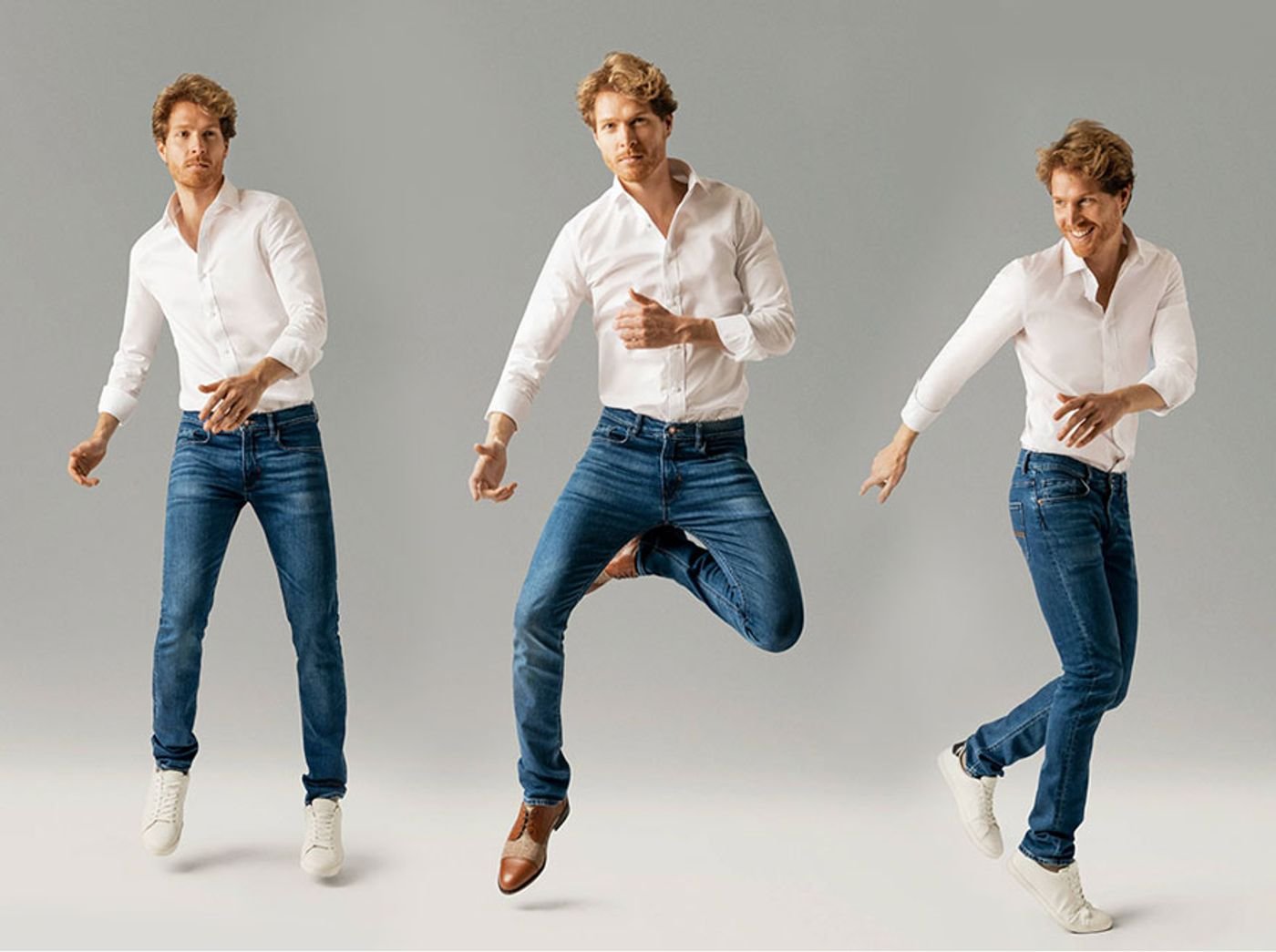
How are jeans actually made?
Most people don’t really think about all the steps involved in getting a nice pair of jeans, but it’s actually pretty fascinating. It all starts out in the cotton fields – the fluffy white cotton bolls have to be harvested, ginned to remove the seeds, and cleaned.
From there, the cotton fibers get spun into thread with big industrial machines. That’s when they can get dyed – usually that iconic indigo blue shade we all know so well. The dyed threads then get woven together into denim fabric with that classic diagonal ribbing pattern.
Rolls and rolls of denim cloth get cut with high-tech laser equipment. All the separate jean parts like the front and back pieces, pockets, fly, etc. get cut precisely. Then it’s off to the sewing department where specialized machines rapidly stitch it all together into pant shapes.
The next key process is distressing. Some jeans get washed, others get tumbled with pumice stones to wear down the fabric in spots. Certain styles even use enzymes or lasers to get perfectly faded looks. All of it creates uniqueness in each pair.
Quality checks and packaging wrap up the process. Then those jeans make their way to stores for all of us to enjoy! It’s pretty amazing all the steps and precision it takes to create such an everyday wardrobe staple.
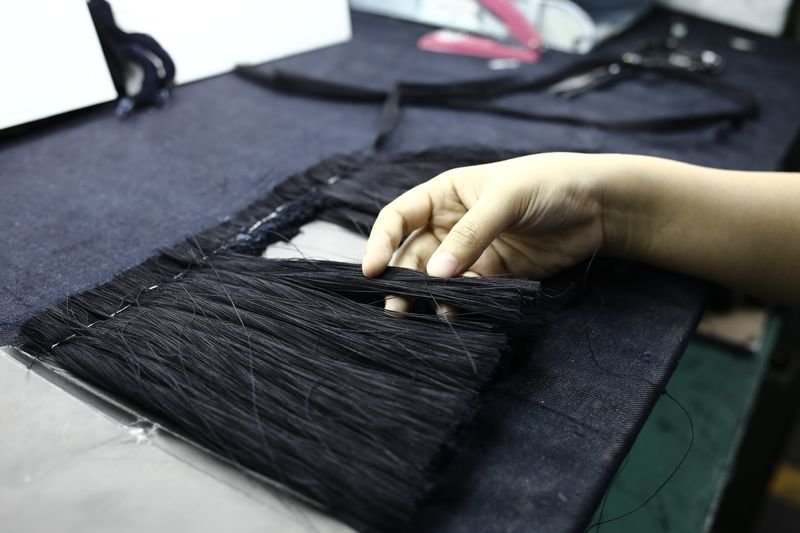
Distinguishing Details of Jeans
Ever notice all the little things that set jeans apart from other pants? Those reinforced details are what give jeans their signature tough-as-nails look. Start with the pockets – usually, you’ll find five pockets, including the ticket pocket up top. The back pockets are almost always riveted on for heavy-duty wear. Rivets prevent tearing where stress is highest.
The fly area, whether it’s button closures or a zipper, also tends to get strategic extra stitching. This makes sure those buttonholes or the zipper seam hold up no matter how low-rise the jeans are worn.
Denim stitching itself follows distinctive patterns too. Like the topstitching that outlines pocket hems and seams for decoration. Or the saddle stitch that assembles denim layers – it’s specially reinforced to prevent unraveling over time.
Even smaller elements make jeans pop, like chain-stitched branding labels or woven brand tags. These subtle finishes showcase the craft behind quality jeans that become faded friends for life. The details are what make denim durable enough to withstand years of love!
Jeans Models, Leg Shapes, and Fits
Straight Leg Jeans:
These are your classic everyday jean silhouette. They’re not too tight or loose – just straight down from your hips to ankles. Straight leg jeans are super flexible – you can dress them up or down easily. They tend to be flattering on most body types too.
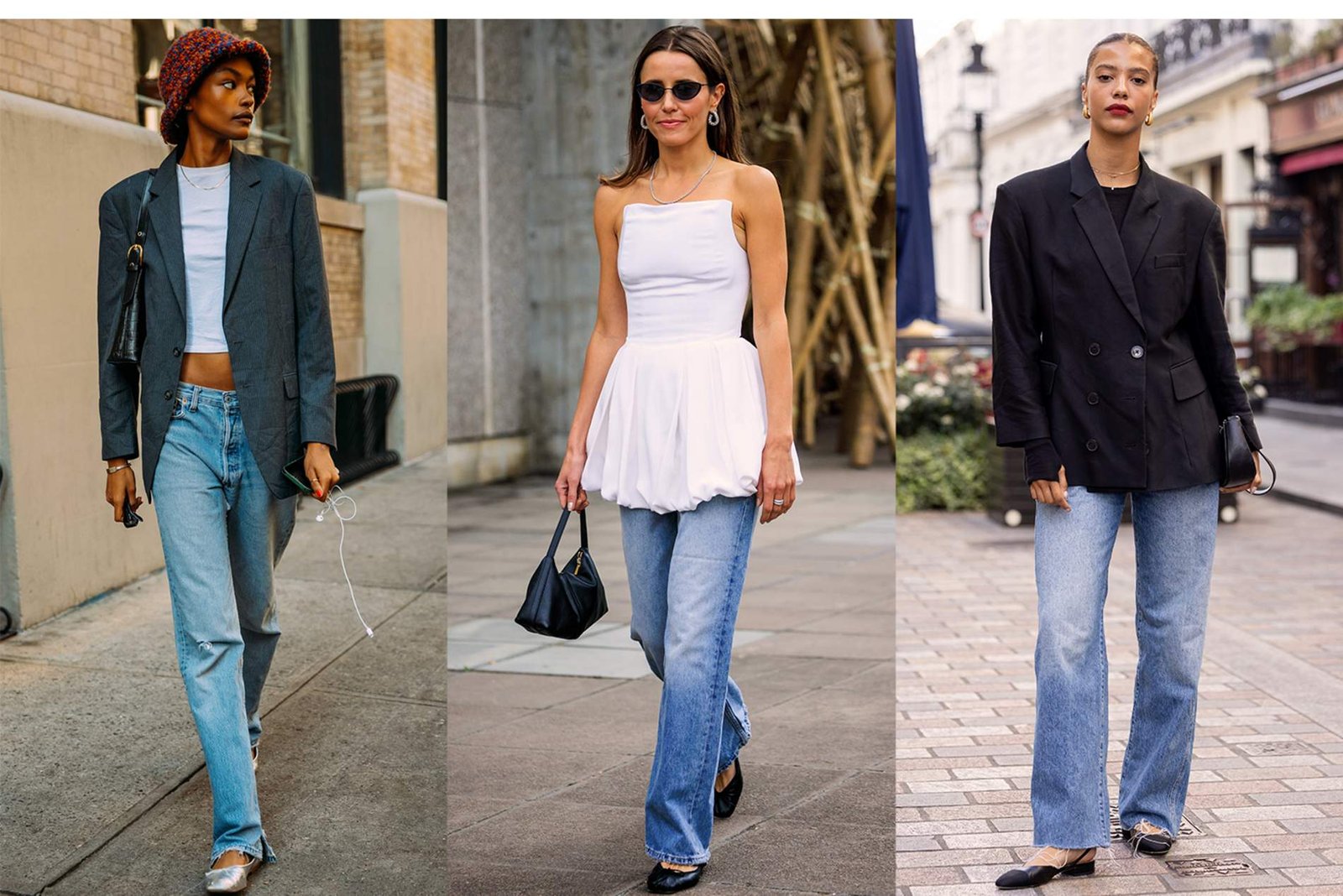
Skinny Jeans:
Now these bad boys live up to their name – they’re skinny from waist to leg opening. Skinnies hug your curves like a second skin. The stretchier ones are comfy, but be warned they’re not for the faint of heart. If you’ve got it, flaunt it in skinnies though!

Jeans Sizes
Bootcut Jeans:
Think of these as straight legs with just a little extra room below the knee. The flair is subtle, meant to accommodate boots without being too bell-bottomed. Bootcuts are great if you wear big footwear a lot. The roomier calves prevent unsightly bunching too.
Relaxed Fit Jeans:
Comfy is the name of the game here. Relaxed jeans have plenty of breathing room throughout without being baggy. The looser fit is perfect for warmer weather or laidback weekends. You’ll forget you’re even wearing pants!
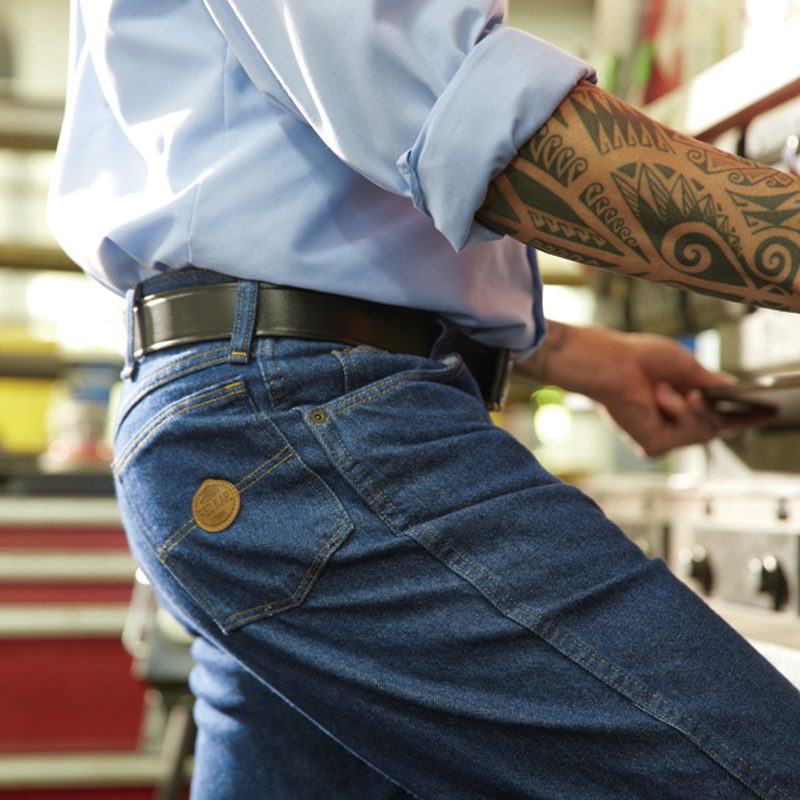
Tapered Jeans:
Tapered jeans balance straight fitting thighs with a gentle taper inward at the ankle. So you get freedom of movement where you need it without any excess fabric bunching at the bottom. They’re flattering and versatile all in one.
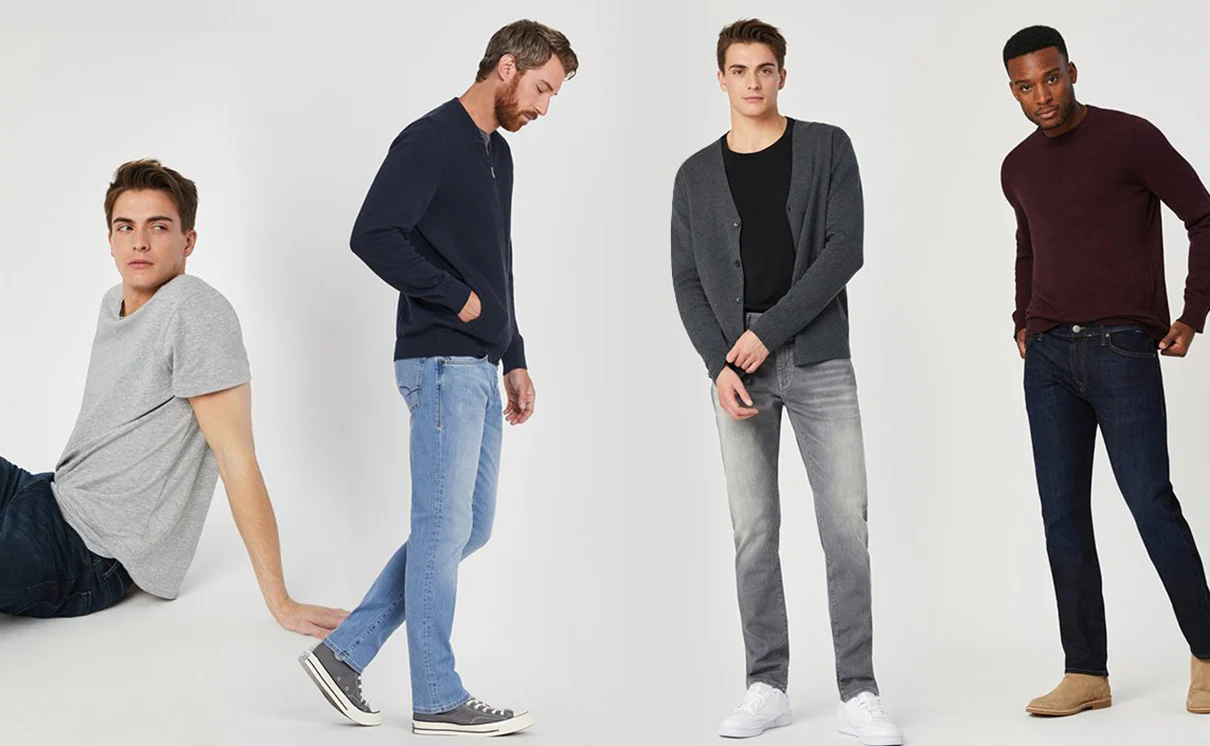
Jeans Sizes
If there’s one confusing thing about jeans shopping, it’s figuring out what size to get, right? Here’s a breakdown of jeans sizing:
Jeans are typically sized according to waist measurement and inseam length in inches. So for example, you might see a size 29×34, meaning 29″ waist and 34″ length. Something else to pay attention to is the rise – that’s the distance from the top of your hip bone to the waistband. Options include:
- Low-rise jeans hit at the hips, usually an 8-9″ rise. These can be flattering but not comfy for all.
- Mid-rise hits your belly button at around 10″. These are the most flexible styles.
- High-rise jeans have a rise of 11-12″ so they hit at your natural waist. Great for highlighting a long torso.
- Different rises suit different body types – low-rise might not work if you’ve got a tummy. Pay attention to your proportions.
It also helps to try different sizes depending on the brand. Some run large, some small. A tailor can adjust the length too if needed. then you’ll find your perfect pair!
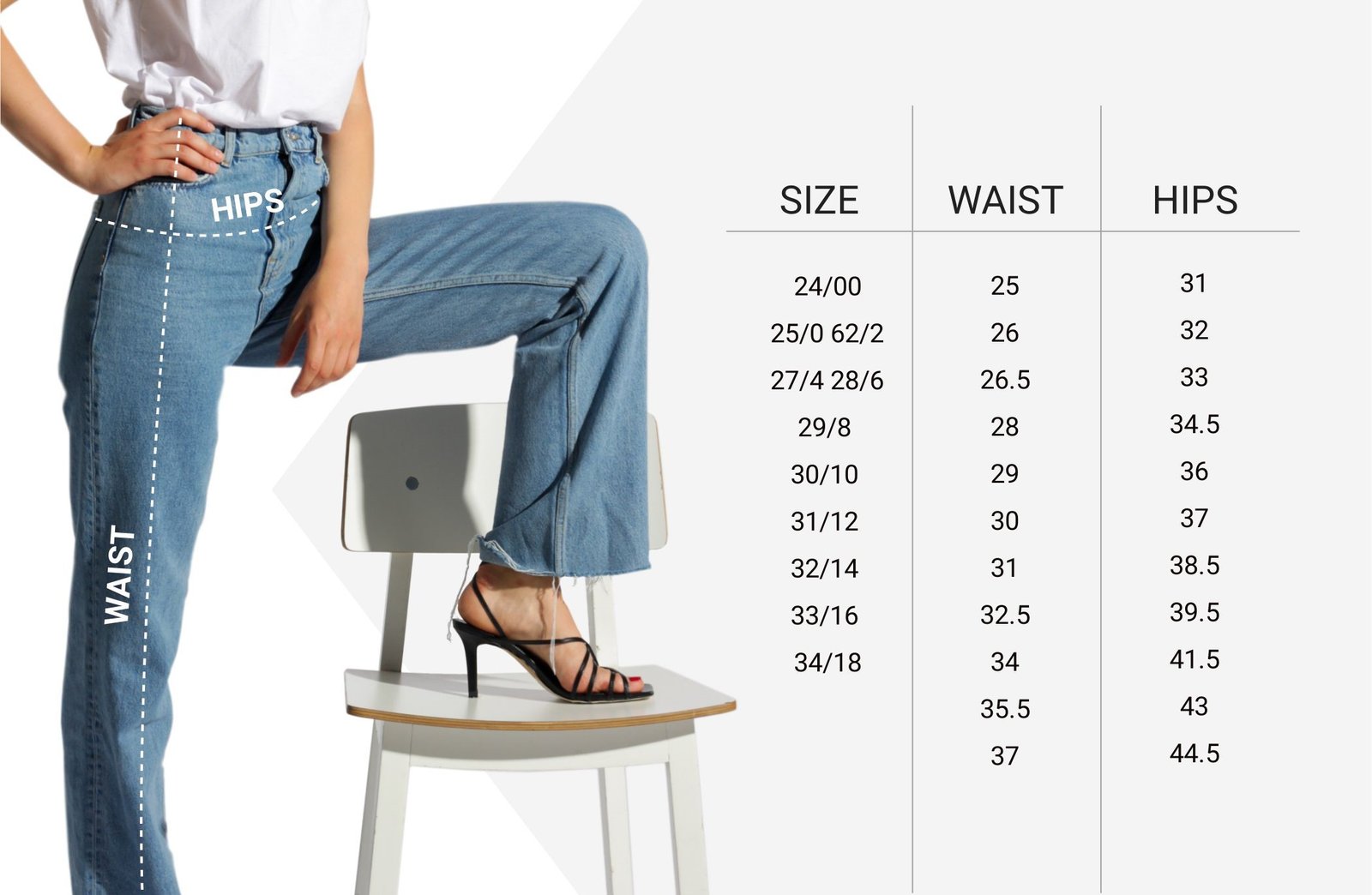
Differentiation, Pricing, and Marketing of Jeans
When it comes to jeans, brands really know how to differentiate themselves – here’s a quick rundown of how pricing and marketing strategies come into play:
On the more affordable end, you’ve got your everyday basic jeans from big retailers. They’ll do the job, but not much frills. These brands focus on value and accessibility above all. Step it up a notch, mid-range denim companies tout features like special washes, flattering fits, and durable stitching – things that justify a slightly higher cost. Lots emphasize the eternal style of jeans too.
Once you hit designer denim, prices skyrocket but so does perceived quality. High-end brands market exclusive fabrics, cool details, and limited runs – making their jeans a luxury staple. Authenticity and craft are big sells.
It’s all about the implied value – mass brands keep it simple, mid-tiers add perks, high-ends promise heirloom construction. Marketing plays on emotions like nostalgia, image, or status just as much as the jeans themselves!
At the end of the day, most of us just want a kickass pair of jeans. Marketing makes the differences feel meaningful depending on your budget. And jeans remain a universally timeless item regardless of price.
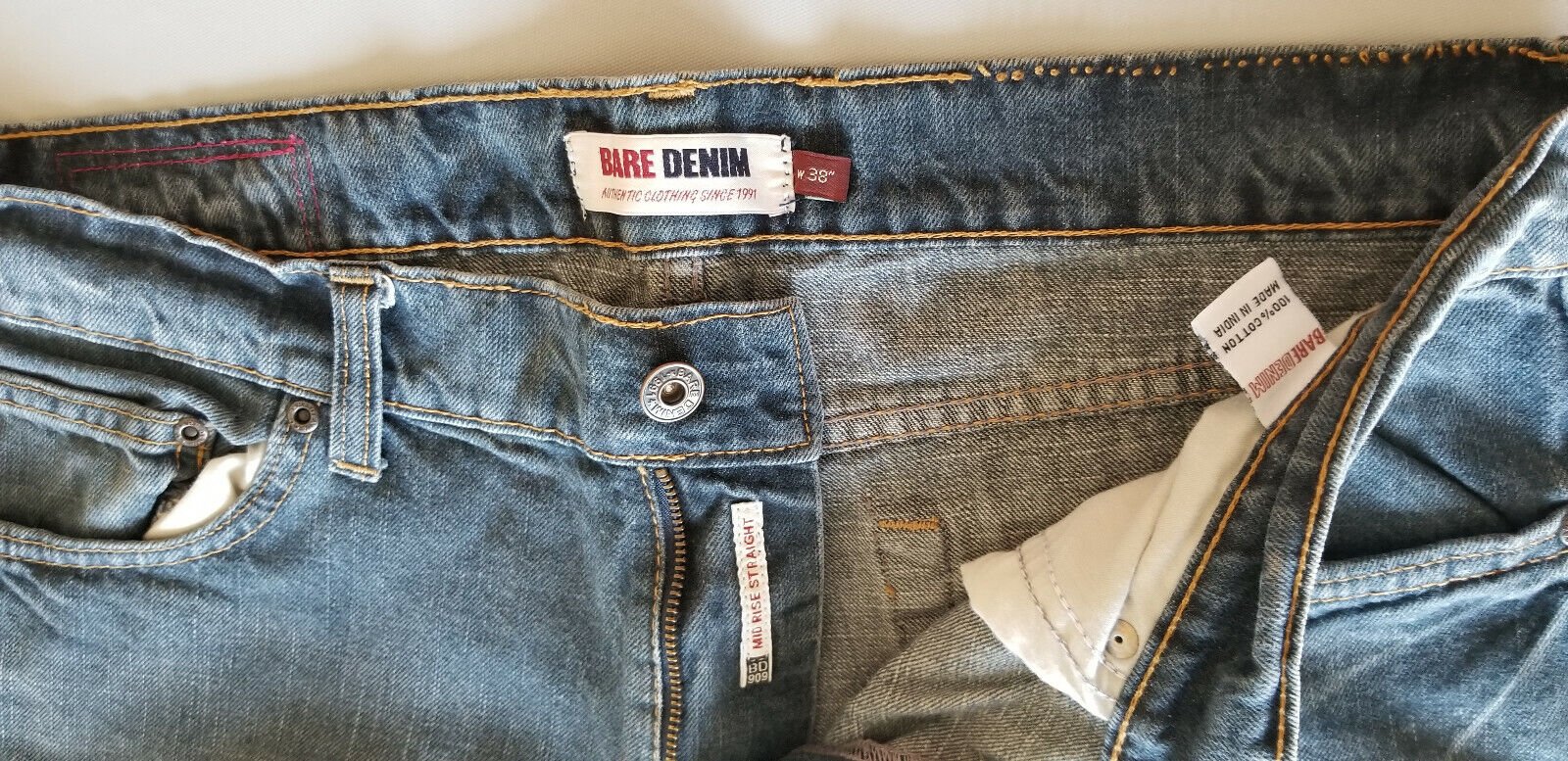
Care and Maintenance of Jeans
Jeans are meant to last, but you still wanna keep them looking their best. Thankfully denim is pretty low maintenance. They can handle more wear and tear than other fabrics. Most of the time, jeans don’t actually need washing after every wear. Letting them air out between wears helps them stay fresh. When it is time for a wash, turn them inside out and skip the dryer – air drying is best. Too much heat can damage the fibers. Some fancy jeans like selvedge denim actually change with wear, so you don’t wanna strip all that away in the wash too soon. Let your movements shape the fabric naturally for the first while. These raw kinds are better off taken to the dry cleaner too.
If your jeans have stretch, be extra gentle – low heat is key so the elastic doesn’t get cooked. You want them keeping that comfy fit! Right after laundering, denim may feel a bit stiff again at first. Don’t worry, your body heat and movement will soften them right back up with some more wear. With a little TLC here and there, jeans can really last and get even better with age. Hope these tips help keep your favorite pairs in style for seasons to come!

How Jeans Were Invented and Became a Popular Garment
In the wild American West of the 1800s, miners and cowboys needed tough pants that could handle rugged conditions. Enter two dudes – Jacob Davis was a tailor from Reno and Levi Strauss was a businessman selling canvas. Jacob came up with the idea to use thick denim fabric and add metal rivets at stress points to make working mens’ pants last longer. He and Levi teamed up, patented the design, and the first official blue jeans were born in 1873 under the Levi Strauss & Co brand.
Word spread fast about these durable dungarees. Pretty soon everyone wanted a pair – laborers, rebellious youth, creative types. Jeans became a youth fashion statement in the 1950s, epitomizing coolness thanks to icons like Marlon Brando and James Dean. Subcultures in the 60s-80s like hippies and punks embraced jeans’ anti-establishment spirit. By the 1990s, premier designers were making high-end denim and jeans had fully blurred class lines.
Now jeans are truly everywhere. From runway shows to video games to Olympic podiums, jeans have come a long way from simple workwear. Turns out making comfortable pants people want to wear is a recipe for unprecedented success!
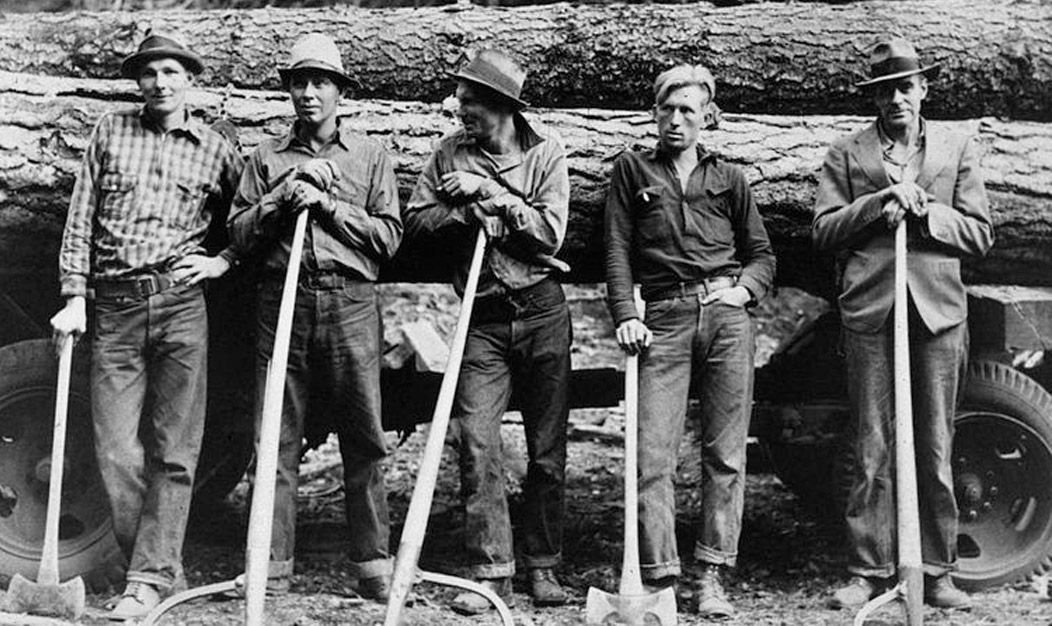
History: From Work Trousers to Everyday Jeans
If you think about it, jeans have come a long way from their roots in the 19th century. Back then, they really were just tough trousers for guys doing tough jobs like mining, carpentry – you know, getting dirty work done.
That’s when Levi Strauss put rivets on some jeans to make em extra durable – and guess what, everyone wanted a pair! Those rugged jeans were just what hardworking folks needed. But it wasn’t always about labor…
Fast forward to the 50s, and jeans became a symbol for young rebellious types. James Dean, and Marlon Brando rocked them on screen in a way that said “I don’t care what you think.” And so jeans became this cool anti-establishment statement.
Over the next few decades, subcultures like hippies and punks turned jeans into an art form. Designers got fancy with premium denim too. By now jeans transcended what you wore them for – they were just plain iconic.
These days everyone wears jeans casually – grandparents, toddlers, and celebrities alike. No matter who you are or what you do, jeans are an everyday essential. Pretty wild how pants that started out dirty became the world’s favorite garment!
While jeans may have started out humbly as tough workwear, they have truly become one of the most ubiquitous items of clothing worldwide. From their origins in equipping laborers to their evolution into a symbol of youth culture rebellion, jeans have continually shaped and changed with the times.
Even as fashion trends come and go, denim jeans remain a universally timeless staple. Their combination of stylish design, comfortable fabric, and storied past has cemented jeans as a cross-generational closet essential. Whether worn for a day on the job or a night out, jeans demonstrate how a simple garment can take on rich cultural significance over decades. Their ongoing global popularity shows no signs of slowing – a true testament to jeans’ hardworking roots and rebel spirit.

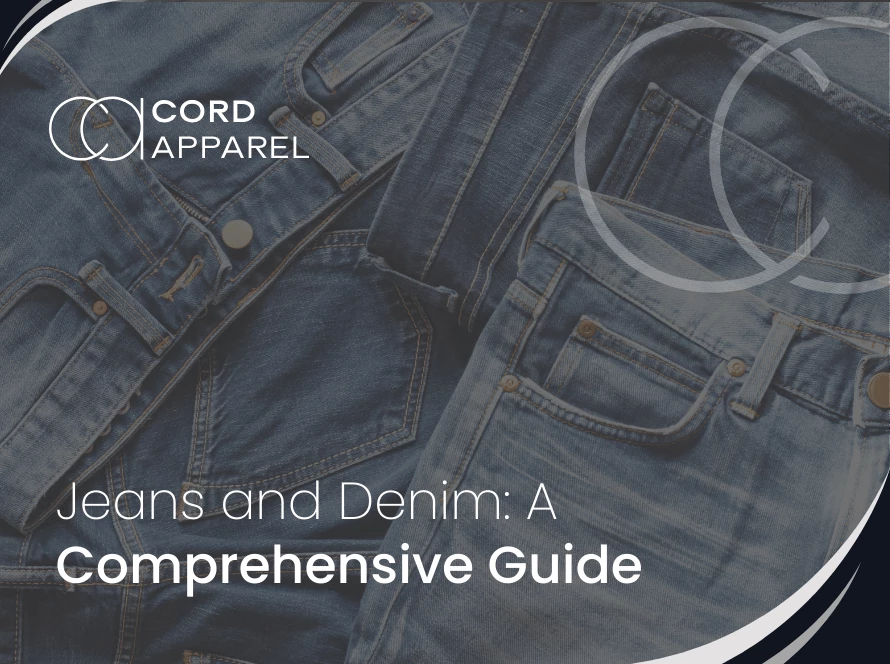


Leave a Reply